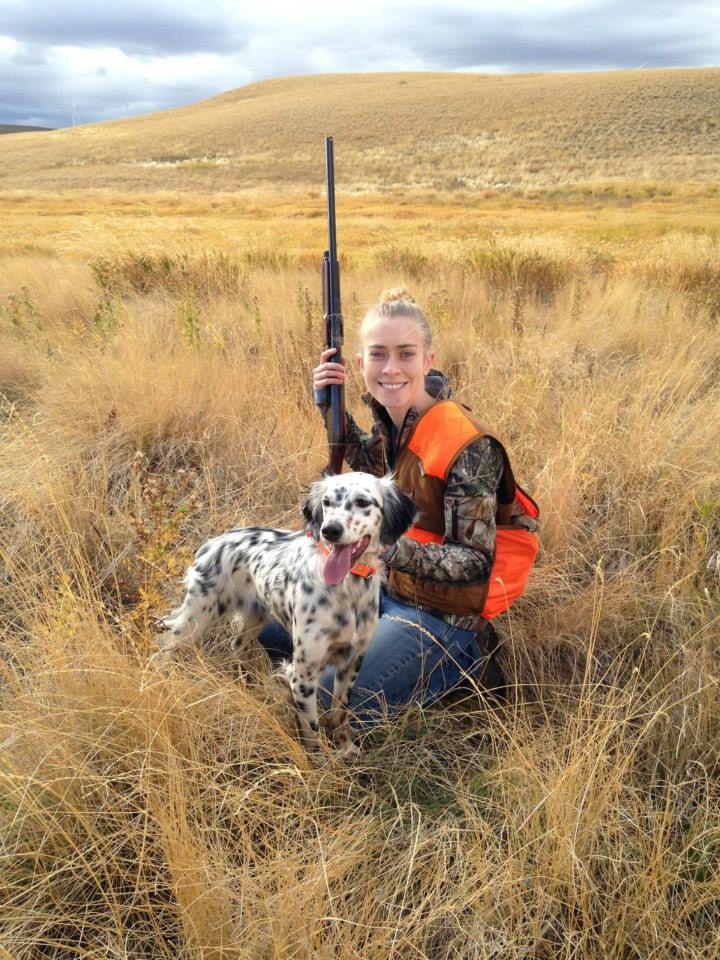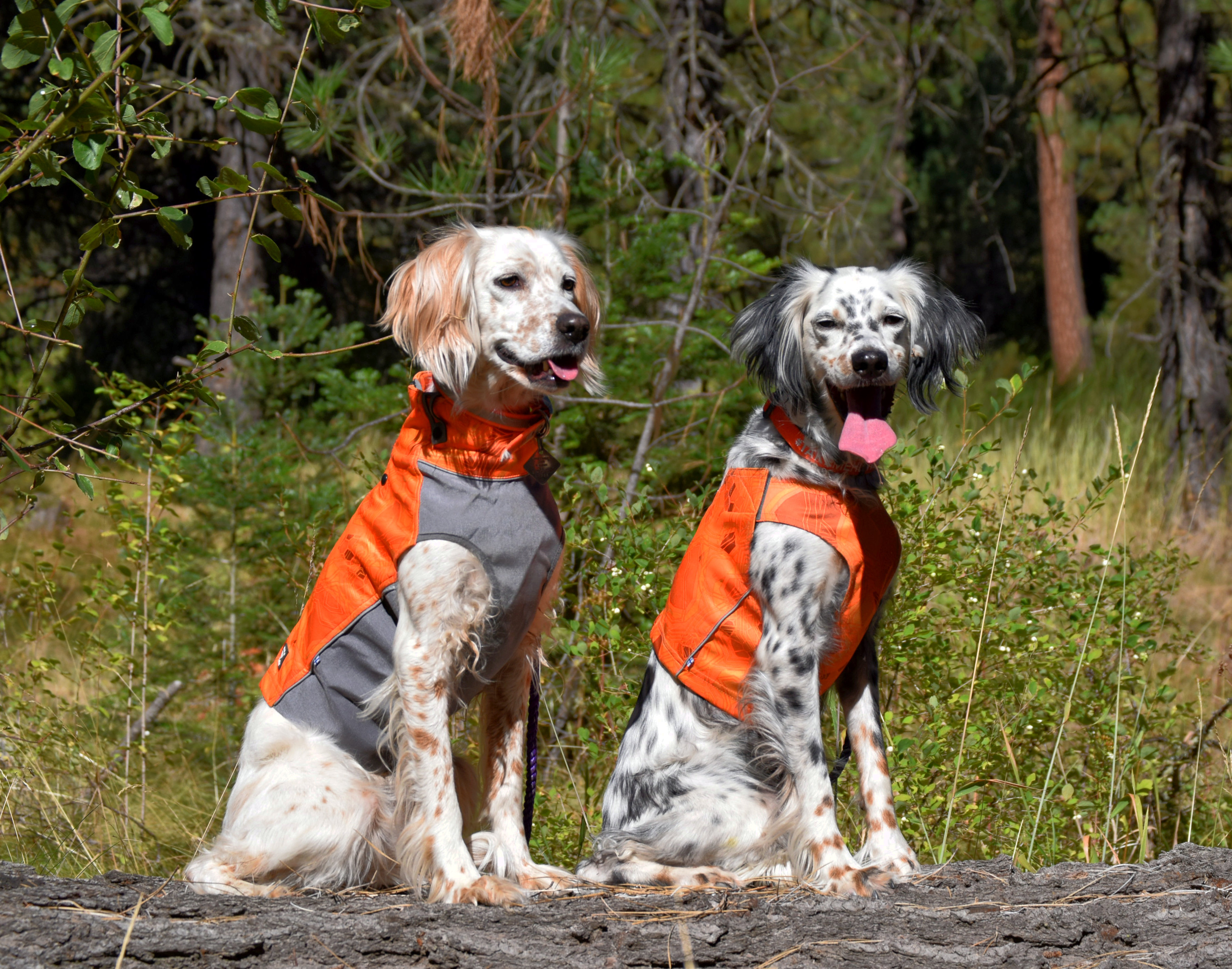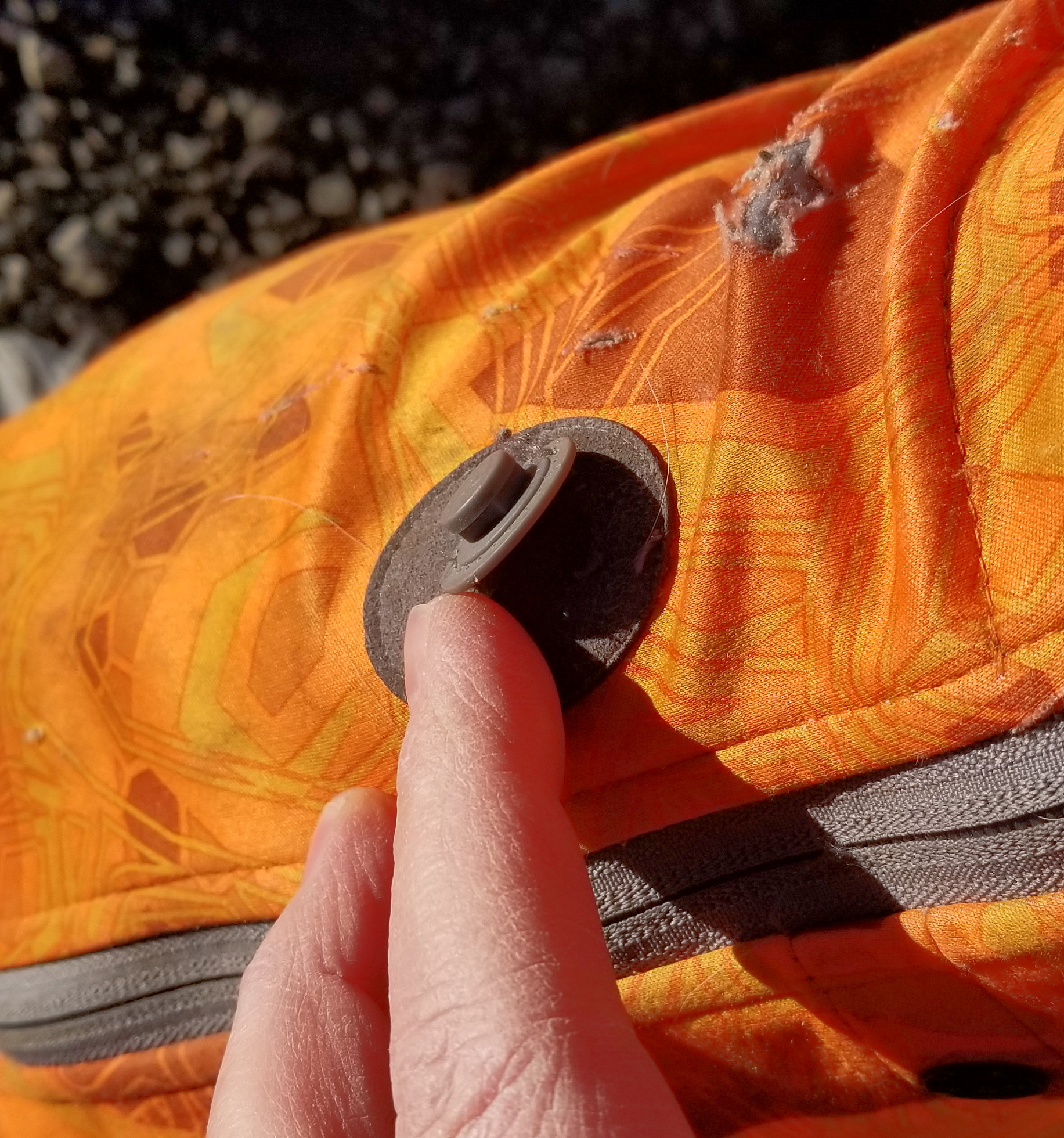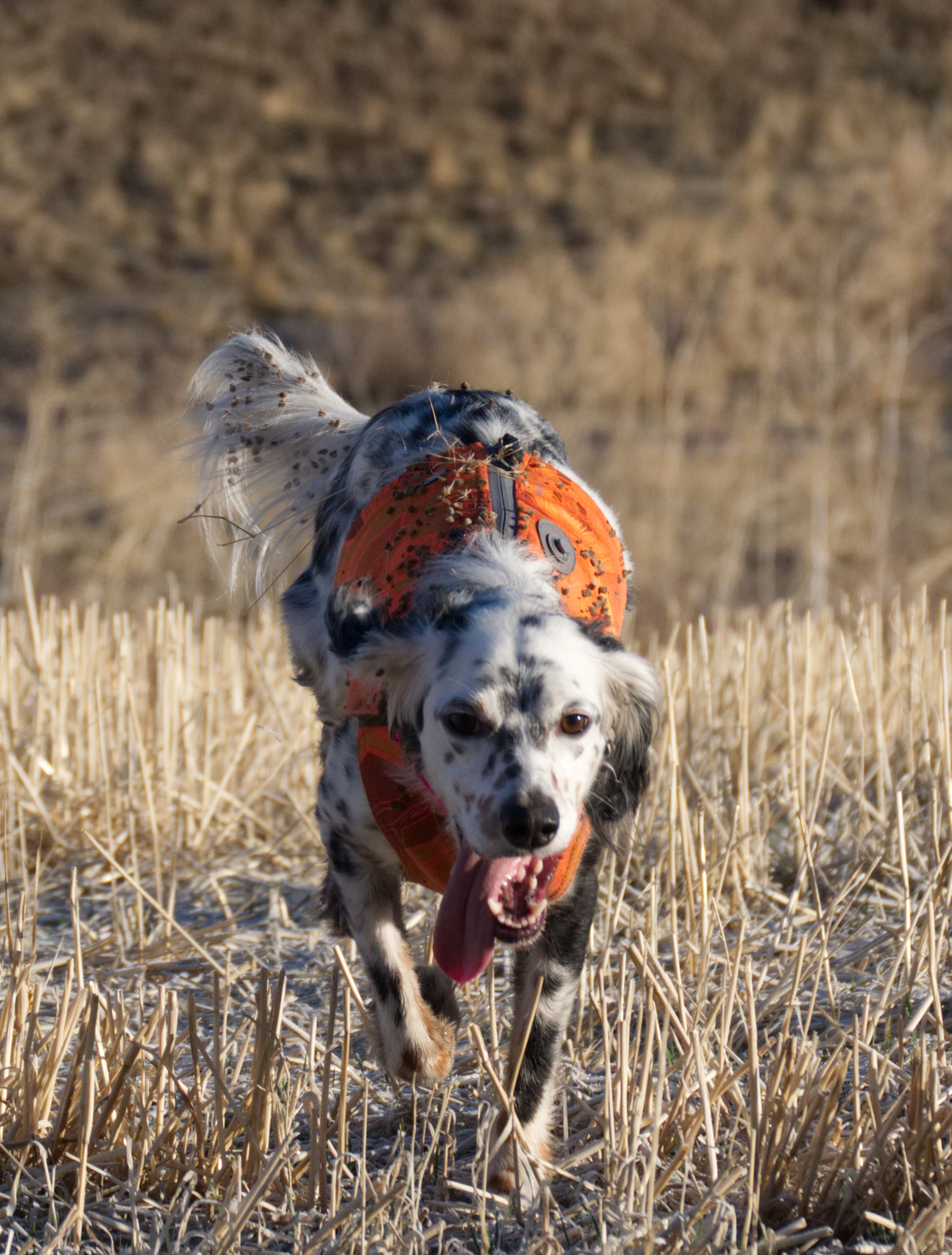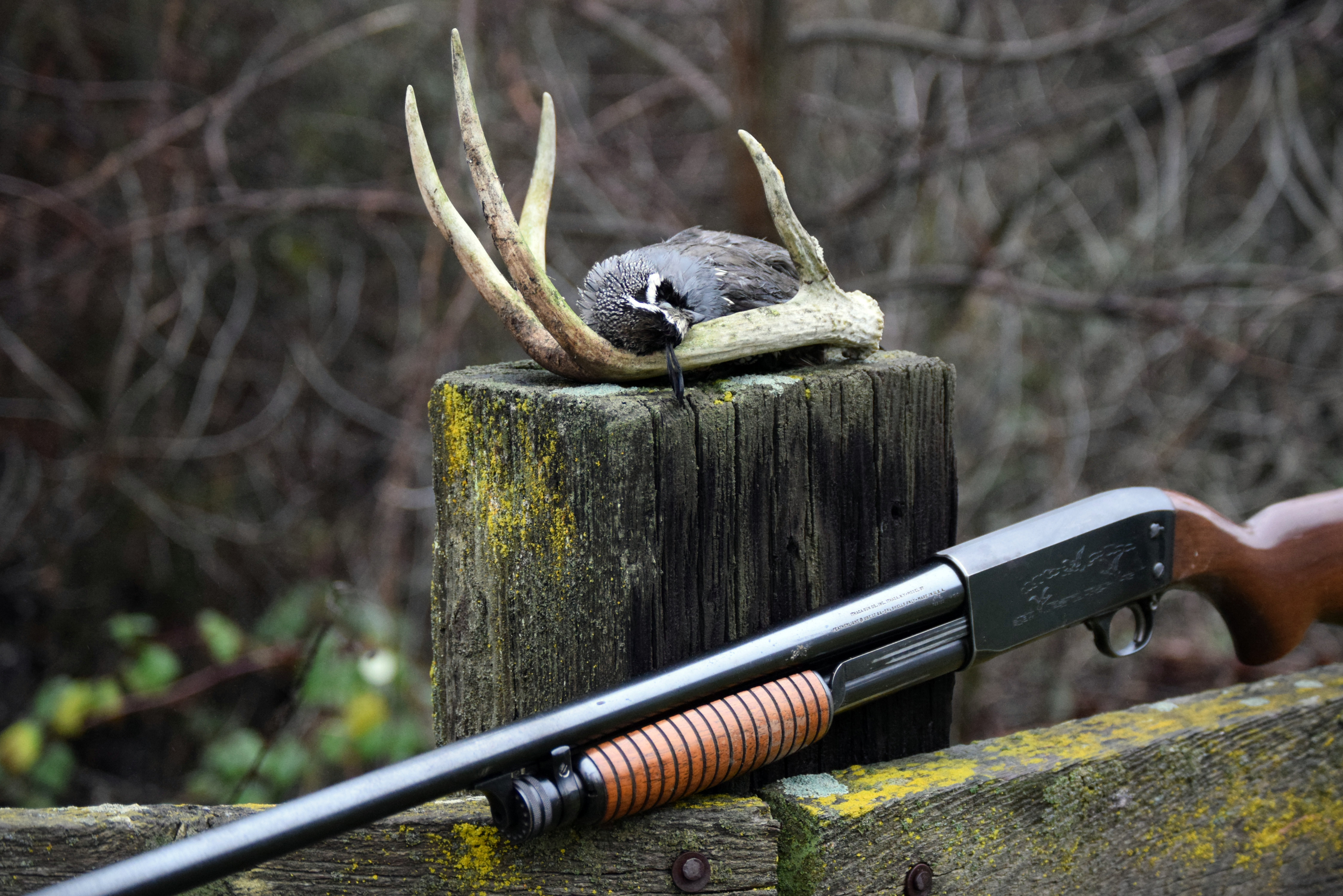The Backstory
Yuba sat trembling atop my lap, peering out the back of the cabin as the 225 horsepower Yamaha outboard thrust the North River Seahawk onto plane. The night brought freezing rain and wet snow, but the morning was dawning beautifully; the Snake River meandering its way between fog banks under a pink cotton candy sunrise. On board we had Dave, Brett, Rhett, two old, rotund Brittanys, and Yuba and I.
Our plan was to swing into a remote US Army Corps of Engineers habitat unit and split up. Cautioning the guys about Yuba’s big-running tendency, Dave, the only dog-less crew member, volunteered to hang with Yuba and I, while Rhett and Brett took the Brittanys to the other end of the property. Yuba is certainly the baby of the family, terrified of water, and is unsure of strange dogs, but she hit the ground running as the boat slid in under the Russian olives at the foot of a looming basalt bluff.
Dave and I barely made it around the toe of the bluff when we strolled right into a flock Rio Grande wild turkey. Yuba had seen a single or two, but the flock of 30 birds erupting from under the Russian olives sent her into a new dimension of crazy. Carrying a valid turkey tag, I wasted no time releasing a round of 4-shot steel from my old Ithaca model 37 pump, resulting in a notched tag and heavy vest.

From Yuba’s perspective, the Rio hen was simply a giant prairie grouse with strong scent. And clearly, they were fair game as ole dad bagged one instantly. Therefore, in classic pointing dog fashion, she bounded off to peg the next bird. The turkeys amusingly dispersed like a flock of quail among the grassland. Yuba pointed and we flushed about a dozen singles throughout the hunt. But the real show began when we got into the pheasant.
As if Yuba weren’t crazy enough, there were dozens of pheasant along the riverbank, hiding in the false indigo and flushing wild. As we pinched in toward Brett and Rhett, the pheasant started busting in all directions, bird dogs were pointing, scurrying, and looking for birds to retrieve from a volley of shots.
I noticed I was on the whistle a lot more than normal as Yuba careened in, around, and through every bit of cover she could find. But even in the chaos and sensory overload, I was impressed with her finding and pointing prowess, telegraphing with precision where a bird was, should be, or was headed. The entire show was simply unprecedented.
I never touched a rooster all morning, but was amped and proud as we made our way back to our pick-up point. Yuba was beat, of that I was sure, but I had little worry as she was actively and intelligently hunting the entire morning. Still, I kept a keen eye on her as I am accustomed to her hips getting stiff and sore as a result of dysplasia. So, it was no news when she suddenly started to show some signs of hip pain, or so I assumed, from a seemingly stiff gait.

Almost to the boat, I noticed Yuba’s hind legs quiver a bit, so I scooped her up and carried her the rest of the way. Her reward for an incredible hunt would be to warm up, grab a snack, and retire from the afternoon hunt. Handing her up to Brett, I swung myself aboard, regained my feet, and reached out to take my tired little setter. But confusion was replaced with dread as I noticed her eyes clenched in pain, followed by the unmistakable convulsions of a seizure.
“Holy shit, she’s seizing!” I yelled to Brett, who swiftly laid her out on the large, cushioned bench seat in the boat’s cabin.
I wrapped her in my insulated overalls while Brett cradled Yuba’s head. Seizures can present with a variety bodily functions, pains, and other involuntary motions and sounds. An eternal minute passed as every muscle in her tiny body went board-stiff, but the worst of it was her uncontrollable screaming.
With muscles finally relaxing and cognizance regaining, the pain must have been unbearable; the cause I am left to assume was perceived as some unknown predator. Large, dilated pupils searched to unveil the culprit as she pled for mercy. Terror, confusion, and panic were evident as Brett and I spoke softly, stroking her ears in an attempt to sooth her fear, if nothing else.
At the two-minute mark, she began to quiet. The convulsions had completely ceased and sore muscles relaxed. I scooped her up, still wrapped in my now defiled overalls, and sat with her curled on my lap like a newborn pup. Brett solemnly motored toward the marina.
She had come out of it. That was the first blessing, but I had no way of really checking her neurological signs as of yet. Suspicious that the cause was either an electrolyte or glucose deficiency, I went for a honey packet, which I had readily on hand for this very situation. She lapped at it eagerly.
Back at the truck, I tucked Yuba in softly among a fleece blanket and the overalls, and offered some water, which she happily drank. She was showing no sign of impaired motor skills, but was still clearly wiped from the exertion of the hunt and seizure. Dropping the Tundra into drive, I dialed the local vet, announcing I would see her in 45 minutes, if not sooner.
Keeping tabs on the groggy pup, I randomly whistled or called her name. She always responded. Carrying her across the threshold at the vet’s office, she wagged at the receptionist, and sat upright on my lap in the waiting room. The visit was short and sweet, and Yuba’s behavior improved immensely in that insignificant amount of time.
The diagnosis was as I suspected afield. Hypoglycemia. More appropriately, Hunting Dog Hypoglycemia (HDH).

What is HDH?
I believe most folks know what hypoglycemia is, but in case you don’t, its low blood sugar. A pup’s normal blood sugar should range somewhere between about 70-150 ml/dl. A dog experiencing HDH will have a value likely below 50 ml/dl. Dr. Shawn Wayment (DVM, @birddogdoc on Instagram) explains that HDH occurs when a canine athlete exerts itself in strenuous exercise thereby rapidly depleting their blood sugar (glucose) before their reserves can be remobilized or released from glycogen storages from the muscle and liver.
Symptoms
There are a number of reliable resources on HDH that share common symptoms that may include the following.
- General fatigue
- Staggering
- Trembling
- Shaking
- Nervousness
- Anxiety
- Weakness
- Ataxia (loss of control of bodily movements)
As with any medical condition, no two cases will necessarily present alike. Athletes fatigue when they work hard, whether two- or four-legged. Yuba was showing fatigue as she has on every hunt for the past four seasons, but no other symptoms until about five minutes prior to her seizure. At that time, her demeanor appeared similar to her pre-FHO days when her hips began to hurt and stiffen.
Causes
Dr. Wayment refers to current literature on HDH pointing to a lack of condition as a common cause; however, he believes that this is simply not the whole truth and has “…seen it happen in very well-conditioned canine athletes.” That now makes two of us as Yuba is at the height of her physical ability for the season.
So, what really caused Yuba’s bout of HDH? My hypothesis is the perfect storm of conditions creating utter chaos, sensory overload, and compensation for environmental conditions. The novelty of the hunt in general is my overarching suspicion, the specific points exacerbating Yuba’s metabolic rate being the following.
- General adrenaline and anxiety for an hour before the hunt: Yuba knew we were headed out hunting and was trembling with anticipation the entire truck ride and wait for our comrades.
- First time boat ride: Yuba doesn’t like water more than about a foot deep. She was nervous just walking down the dock to the boat, much less roaring down the river on water she knew was deeper than she is tall.
- Strange dogs: Yuba loves people, but the two strange, yet sweet and well-meaning Brittanys, further prodded her nerves and desire to curl up in my lap for security.
- Turkeys: Yuba had seen a turkey or two before, but the dozens of turkeys that flushed into the grasslands like a flock of quail inundated the area with bird scent. She was working and pointing turkeys left and right the entire hunt. Upon her first find, it was difficult pulling her off of the scent at all. This was uncharted territory for her.
- Pheasant: There were also dozens of pheasant. Everywhere. Between the turkeys and pheasant, she didn’t know which way to go or which scent to key in on and was totally jazzed about it.
- Shooting: The two groups of hunters began at opposite ends and worked toward each other with a barrage of shots throughout the hunt. When the gun fires, Yuba kicks into high gear looking for the dead bird, then tears off in search of the next live bird. Focus was a bit problematic as she wasn’t sure what she should do at times.
- Frigid Conditions: We had been hunting since September, but this was the first actually cold day afield. And it wasn’t just cold, but wet from icy precipitation. She was soaked and chilly causing additional caloric burn to maintain body temperature.
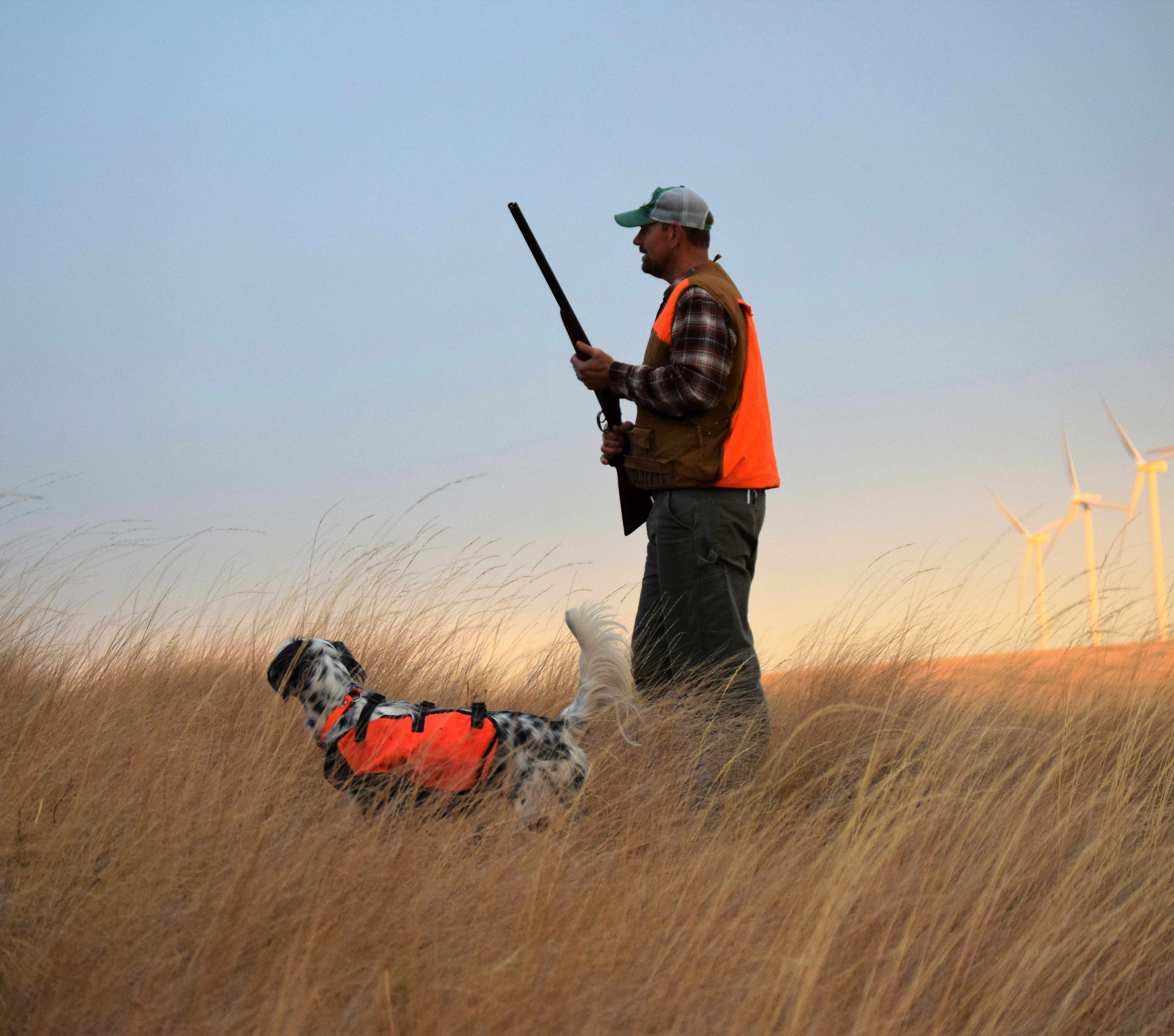
Prevention
The old saying that “an ounce of prevention is worth a pound of cure” could not be more true as you cradle your ailing pup in the field with little to nothing you can do to remedy the situation. I was prepared with the necessary items to keep her energy up, but I neglected to enforce break time to care for her. When Yuba is on fire and thoroughly enjoying the hunt, I have to leash her to make her stay put for breaks. I failed to do this on this particular hunt and will not make that mistake again.
Furthermore, a warmer vest that could keep a lean, 28-pound setter drier may have been enough to keep her energy burn rate to a more normal level.
Proper diet, rations, and conditioning are a must for our four-legged upland athletes. How often to feed your dog is another question that I refrain from debating, but some veterinarians suggests that feeding the appropriate daily ration once per day would condition a dog’s body to store a larger liver glycogen reserve to draw from during strenuous activity.
Dr. Wayment also suggests that feeding a dog 10% of its calculated daily ration every two hours during strenuous activity has shown success in preventing HDH symptoms.
Emergency Treatment
What did I do right during this whole debacle? I provided warmth immediately, and water, honey, and rest once the seizing stopped. Yuba came out of it well, was responsive, excited about the honey, and didn’t show any obvious, alarming symptoms of neurological deficiencies. Nevertheless, I rushed Yuba to the vet for an exam, which was one hour to the minute from the onset of her seizure.
The same resources providing information on HDH symptoms also provide a variety of treatment options listed below. Whichever product you choose, at least 50% glucose is key. A couple ounces should suffice if needed in a pinch, but be prepared to feed your dog in short order and rest them the remainder of the day.
- 50% Dextrose solution (50% glucose)
- Karo syrup/corn syrup (100% glucose)
- High fructose corn syrup (50% glucose)
- Honey (50% glucose/50% fructose)
- Maple syrup
- Jelly/jam
- Pure fruit juice
- Nutri-Cal supplement
Dr. Wayment suggests applying to the oral mucous membranes for rapid enzyme break down; however, you should exercise caution. It may be best to wait for the seizing to end before trying to orally administer any of the above. Seizing animals obviously have no voluntary control over their body, including the mouth. Fingers near the teeth could end badly and at no fault or intention of your pup.

Looking Ahead
I learned the hard way to recognize conditions that may be hazardous to my pup’s health, aside from the obvious. Be cognizant of how novel experiences may impose additional stress on your pup.
Do not dismiss symptoms. This is Yuba’s first season hunting post-FHO surgery on her right hip. She is a new dog with relentless enthusiasm and desire, but the former three seasons of monitoring her pain level through her body language left me to assume that any symptoms she expressed were caused by her other, still arthritic hip. This was clearly not so. I don’t recommend looking for the metaphorical zebra at all times, but I do suggest being suspicious enough of the horse to consider a zebra in disguise.
Preparation does not equal prevention without proper action. Keep an eye on your pup and the clock. This can be a tall order amidst insane action, particularly when you rely on your pup to show you when he or she needs a break. But in Yuba’s case, and possibly the case with other pups in peak condition, no obvious symptoms of extreme exertion or energy expense may be noticeable. Had I forced a break and a snack just once, it likely would have prevented the seizure.
While Yuba’s story has a happy ending, a proportion of these cases end fatally. Keep your pup’s energy up, and by all means, if you recognize any of the above symptoms of HDH, allow your pup to rest the remainder of the day. When caught early, pups can bounce back rather quickly. But finding a few additional birds is not worth the risk, lest you be the next to publish the unfortunate story of your pup’s demise in the Pointing Dog Journal subscriber forum.



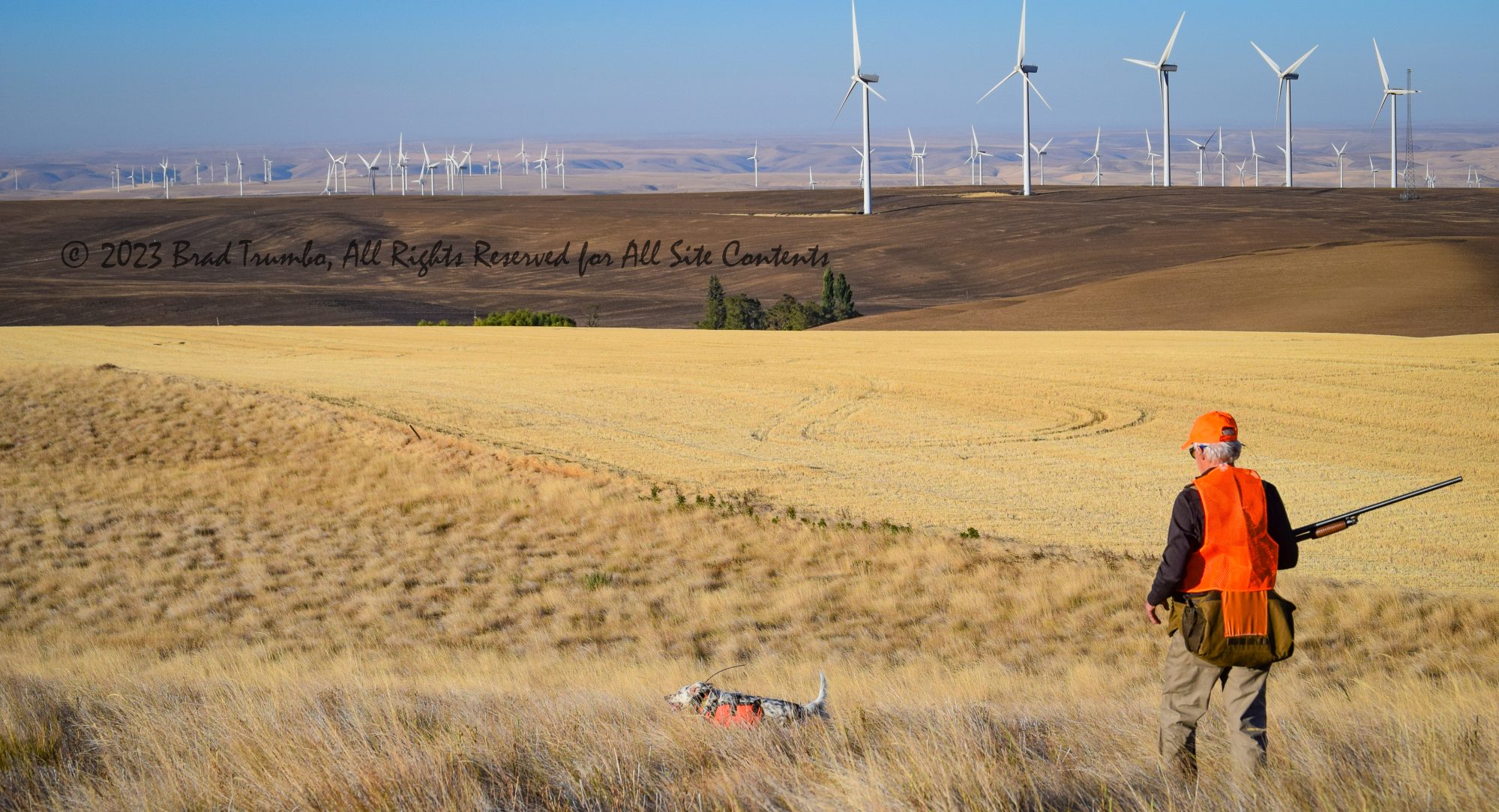

















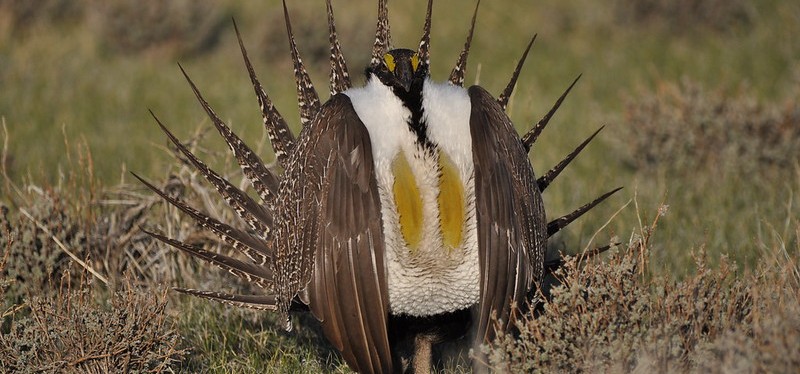

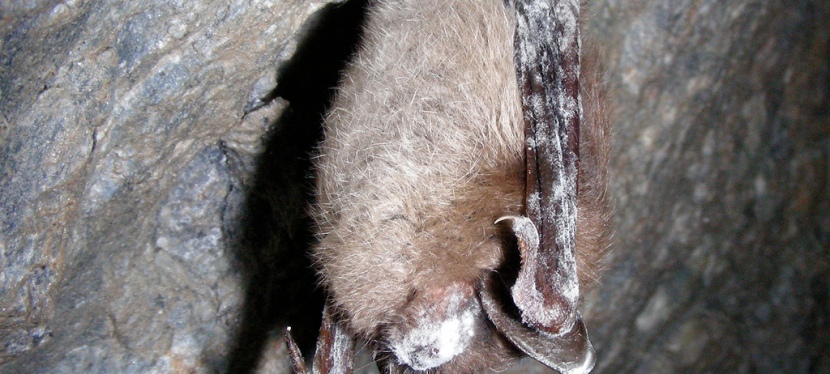



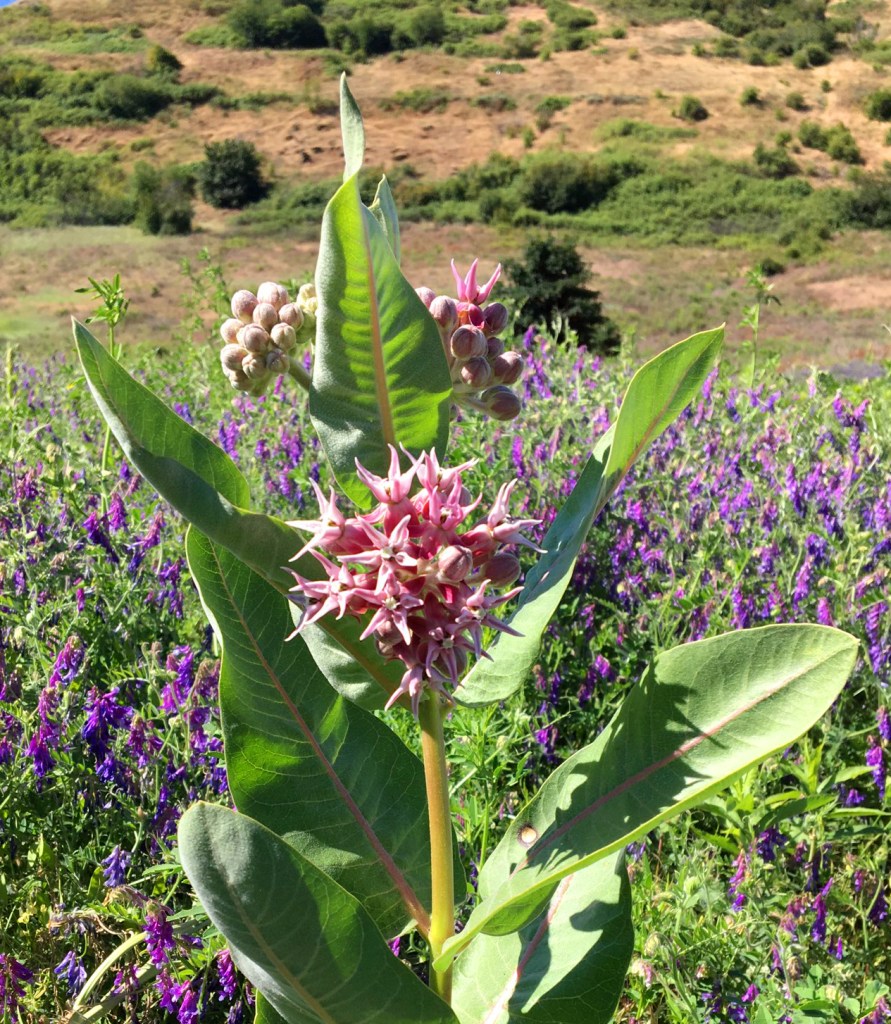











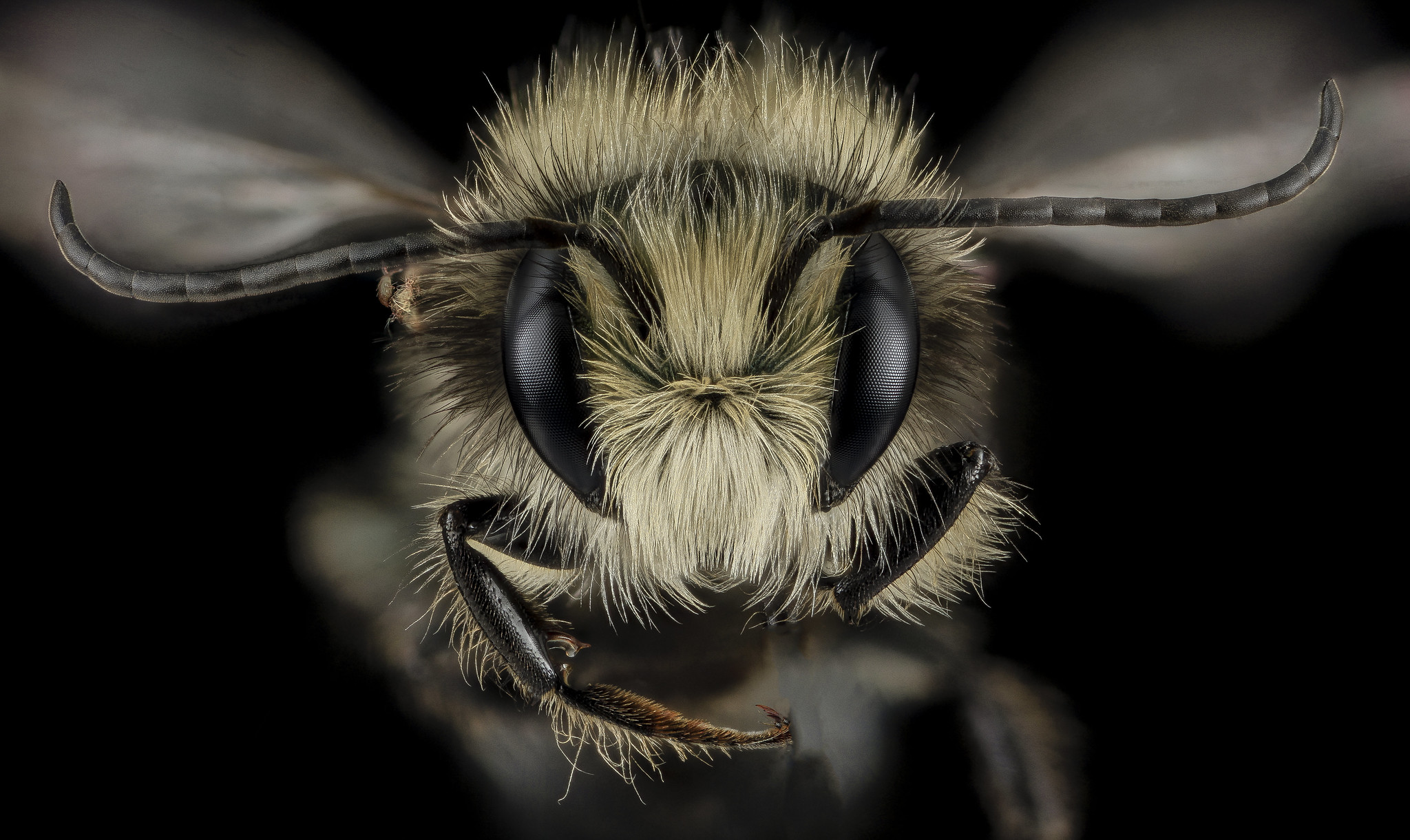





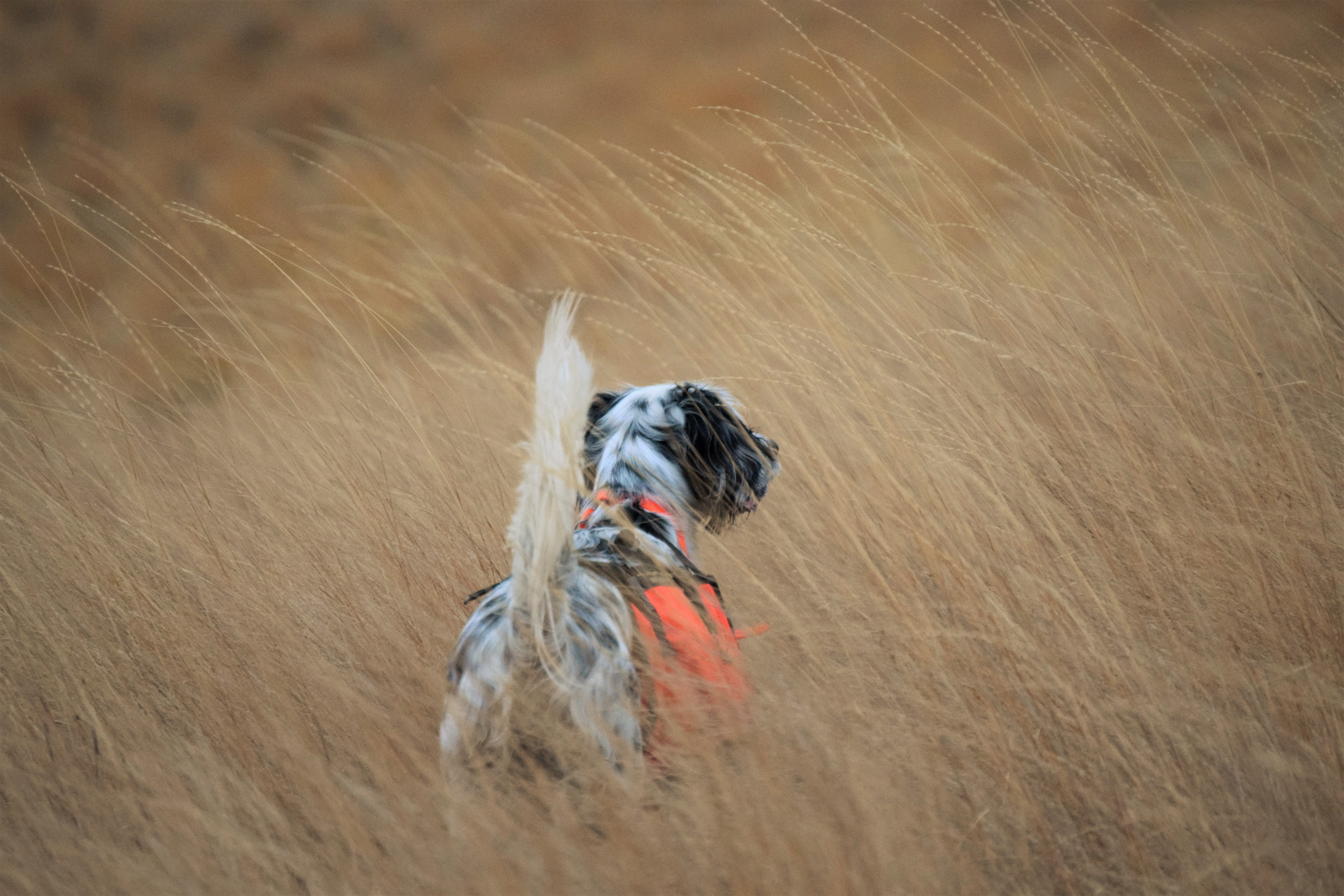
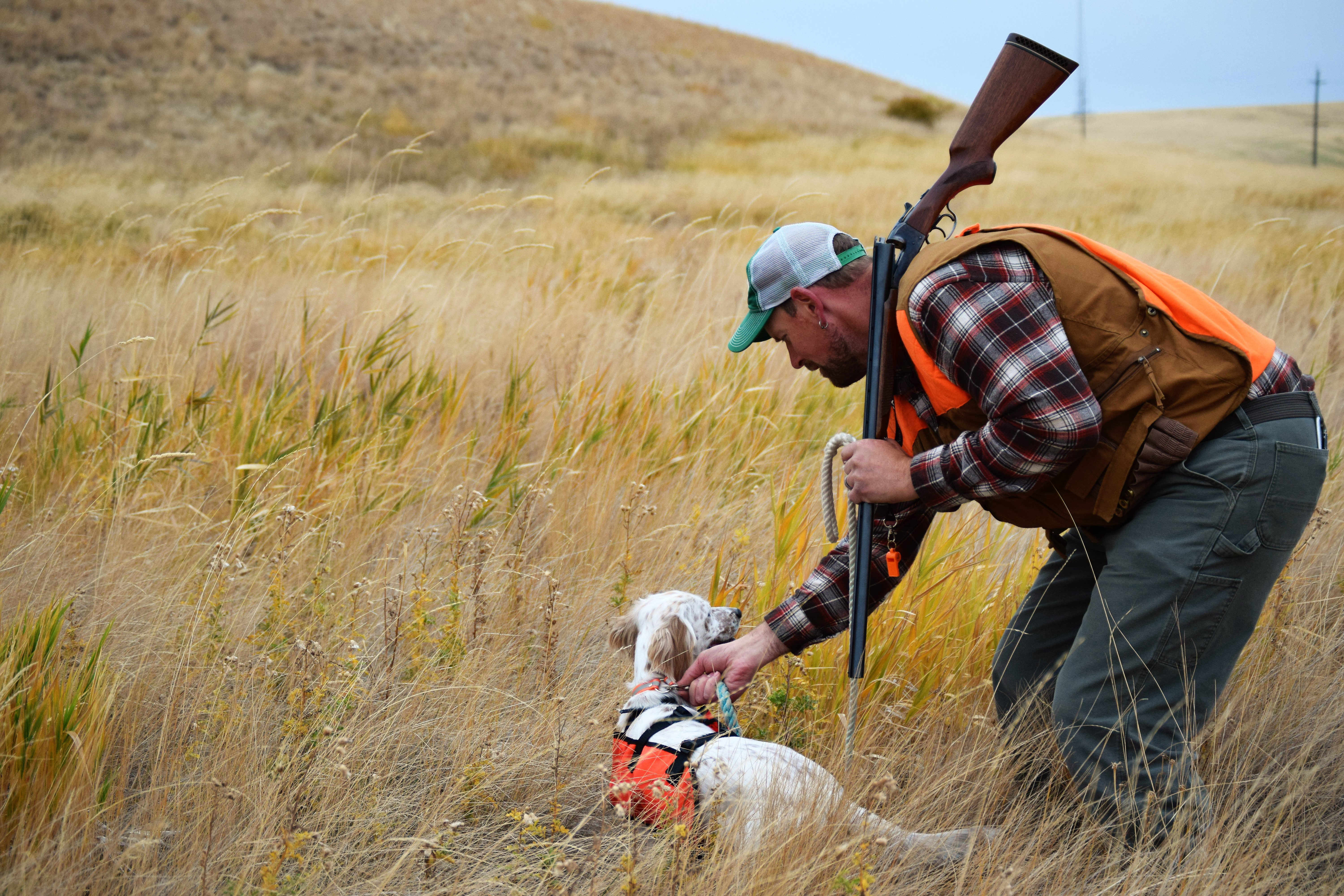




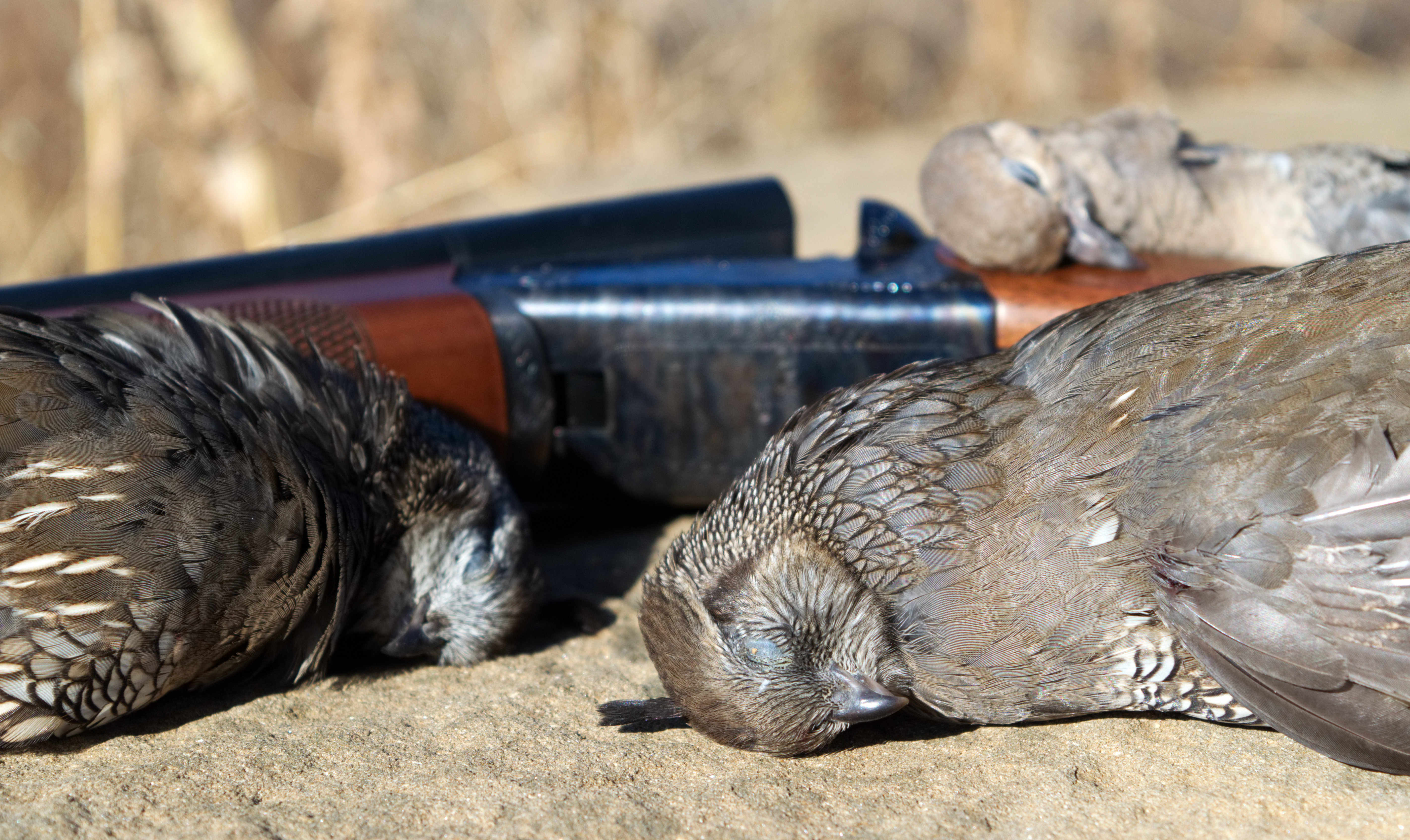












 Zeta at the vet, June 2019, to have cheat grass awns removed from both anal glands.
Zeta at the vet, June 2019, to have cheat grass awns removed from both anal glands.

